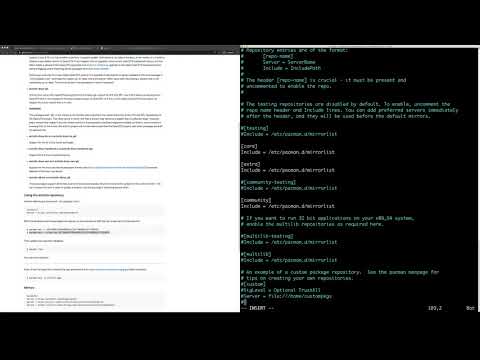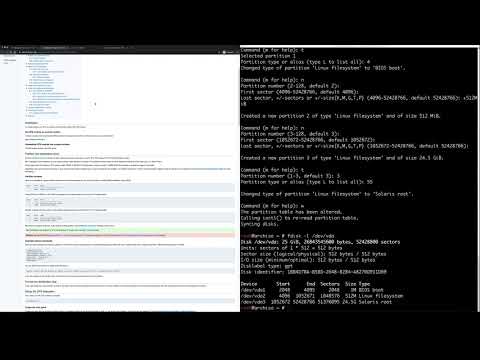VMs with their single virtual disk were on the disks (hardware RAID10) in your test?
OR
Software/virtual RAID was on the virtualboxes?
I do not understand your question? I used virtualbox single discs with btrfs resp zfs filesystem. What I found was, that I could easily reach a point where btrfs refuses to import / mount the filesystem. Everything gone. All data lost. While zfs was importing / mounting fine and only the file(s) with the manipulated blocks where lost.
I thought recovery data could support only RAID level 1+, but not single disk. That is why I asked you how to recovery data when any block or virtual disk was damaged.
I was not looking to recover the data, but the filesystem itself.
EDIT:
Let me clarify further. Lets say the filesystem had 100 files. I was deliberately destroying a few blocks. That affects may be a handful of those files. I was not interested to recover the files. I was interested to see if the filesystem was still working and all the other 90+ files were accessible. For btrfs that was not always the case. In some test the whole filesystem was lost. While zfs always recovered the filesystem and the other 90+ files where ok.
If I understand correctly, ZFS could always automatically recover the broken files in the single disk when ZFS should have run in the online system?
If I break any blocks in Offline then I start the system but it must lose the files and ZFS couldn’t recover the files. Right?
No. I never said this. I clarified this early:
https://mirror.cachyos.org/ISO/kde/220509/
CachyOS has ZFS support built in. I think even in the calamares installer. I just downloaded it to try it out.
Yeah ZFS is extremely robust compared to btrfs, which doesn’t even have stable raid5/6 right now. After YEARS of claiming it would be stable and shredding people’s data.
Calamaris or not, which linux distros & hypervisors allow you to install root on ZFS during installation?
- Ubuntu
- Proxmox
That’s why I use zfs. For me, when running a zfs snapshot, it’s instant and I picture I’m doing a git commit on my file system, able to revert to any snapshot at any time. It makes me more comfortable to poke around under the hood to get a better grasp on how the engine functions. To me, that is the #1 thing that would bring more users to Linux. Granted, that’s a separate conversation that I’d love to have. I know of no Linux distro designed for the everyday person, Linux is built by and for a special breed.
I didn’t test that extensively. Testing 1-2 SSD sn850’s almost a year ago. I got 100-200MB/s random r/w when using ubuntu@zfs on metal on a single sn850. Ran a similar test on windows on a separate pc in ntfs, got 75-150MB/s on some samsung sata ssd. streaming i hit 1.5GB/s using ubuntu@zfs, of course give windows the same platform it’d hit between 4-8GB/s. Wasn’t a extensive test, just wanted to see what it’s be like for someone moving from windows to what I was suggesting to those wanting to try linux: ubuntu@zfs
Yes, I learned that the hard way. Set at least ashift=12 Some Samsung SSD’s, the 980 iirc, are reported to be ashift=13. But it’s not typically not documented by mfr’s, I know of know way to find the truth without testing various combinations until you find the one that performs best. fdisk reads the data that the mfr entered, which have been wrong in the past. I imagine zfs would do the same.
Thank you! I tested it Jan 2021, it wasn’t smooth, but it worked. If it wasn’t for the arch wiki and videos below, I wouldn’t have known how to get it to work. It did take a bit of tinkering I remember. At the time, I thought Manjaro was the only distro to support zfs in the install itself. That’s all you.
Afterwards, the install was fine, except post-install there was a major nvidia bug that made its way into Stable. I haven’t used Manjaro since.
I think cachyos is also on that list now. Another Arch-based distro.
You can also do it on EOS with a little manual intervention
dalto
Thank you
The instructions you provided were far easier than using Manjaro Architect when I did. For one, following those instructions creates all of the datasets for you.
I’ve had zero problems and ready to go forwards with the migration from Unbuntu @ zfs to EndeavourOS @ zfs.
I still don’t believe arch is a good idea for a first time linux user, Ubuntu or Fedora is likely a better bet. But if that person is patient and willing to get their hands dirty, perhaps something like an arch install in a VM, the community here at EndeavourOS has been more cool than what I’ve experienced in Manjaro. Thanks for helping out dalto.

